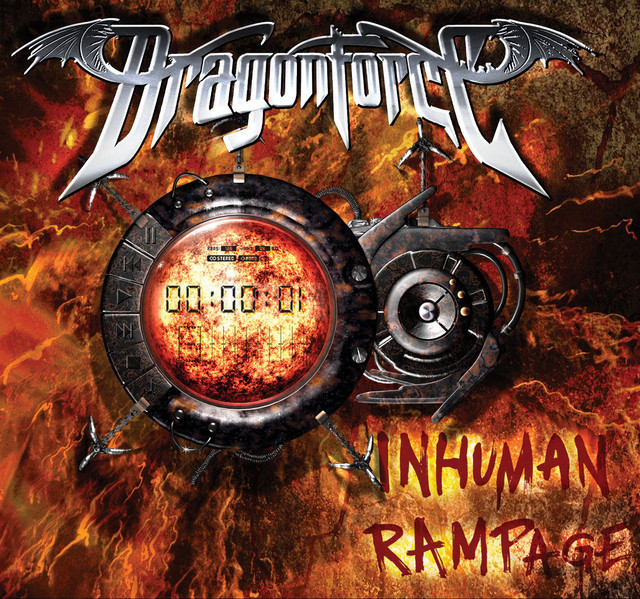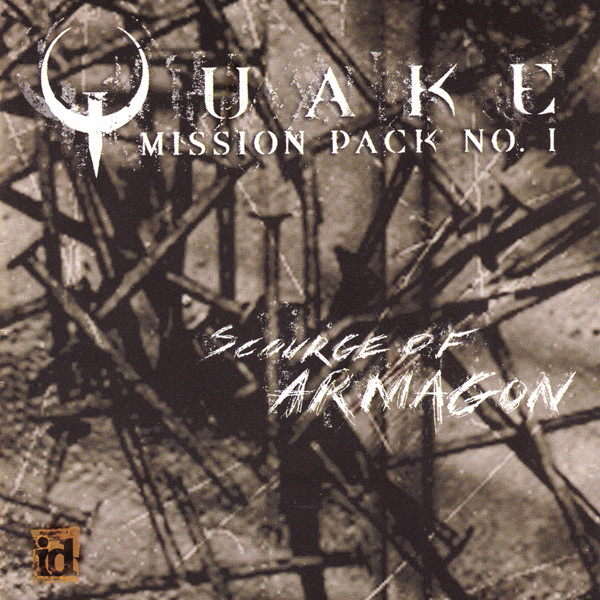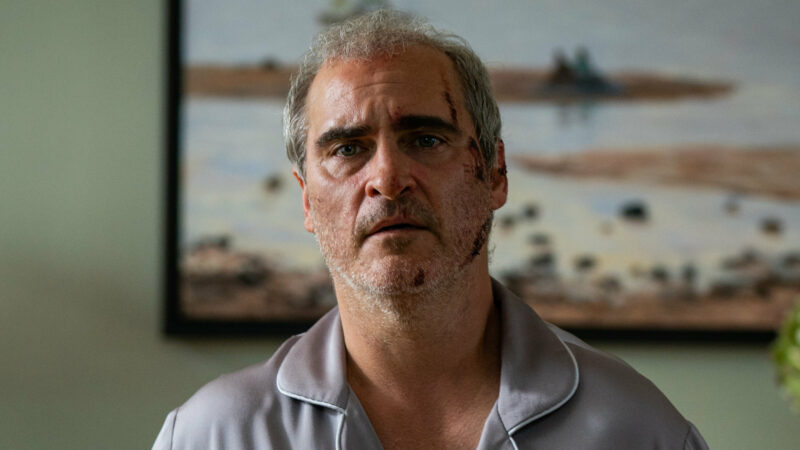
Liked it when I was a teenager. Still like it now. I was born with correct opinions.
Fast, fast, fast power metal, driven by pummeling double bass and wild guitar-shredding. Thousands of notes blast out, stinging and singing like flocks of golden birds. As a kid, I couldn’t believe what what I was hearing. “There should be a law.” If guitars had human rights, both Sam Totman and Herman Li would be trading harmonica solos on death row.
Later discoveries like Galneryus, Vai, Satriani, Gilbert, Shrapnel Records, Yngwie, Buckethead, and even stuff like Nitro would make the DragonForce blitzkrieg sound more ordinary. But when you’re sixteen, this album does to the ears what Arnold Schwarzenegger does to a rainforest in Predator. Not every bullet kills, but they fire a million of them. When I heard Li snapped a string recording the final solo for “Through the Fire and the Flames” (it’s at 6:57—that BROINNGGG that sounds like a saxophone flutter), my first thought was “you mean there were five strings that didn’t snap?”
It’s an assault of notes, with the metronome stuck at exactly 200 bpm (fifteen years later, I’m still mentally reliving an argument I had with a guy last.fm who insisted they’re 100 bpm, because that’s what iTunes told him. Are your ears painted on, bro?). Singer ZP Theart is the steel truss rod supporting the album amidst the chaotic 16th note tapping and sweeping. Without his lead melodies, the enterprise would collapse.
Inhuman Rampage is a real “guitar” album, but few serious guitar players enjoy them. DragonForce never had a chance at being cool: they rocketed to fame in 2006 after a song of theirs appeared in Guitar Hero 3. Truly, the roads to metal immortality are as many as the stars in the sky. Varg Vikernes killed a dude. Glen Benton razored a swastika into his forehead. DragonForce, the absolute madmen, got a song on Guitar Hero 3.
“Through the Fire and the Flame” was their breakout hit. It’s a very good song, though I imagine they regretted writing the intro, because they have to play the song at every show and thus must take a nylon-stringed classical guitar on the road for the rest of their careers. But then there’s “Revolution Deathsquad”, which is even better. And “Operation Ground and Pound” is better again. There’s no actual compelling factual reason “Fire” escaped containment and became their career-defining song, except by circumstance. It could have been one of about four other songs.
Inhuman Rampage is consistently high-quality, but it’s all the same kind of quality. This is the other problem with DragonForce: they tend to burn out the listener. One of the album’s best tracks, “The Flame of Youth”, bounces off you because you just heard “Cry for Eternity”. But it’s a wonderful song, with a great keyboard solo from Vadim Pruzhanov (an underrated member of the band, along with Dave Mackintosh and his nimble drumming). I recommend mainlining only three DragonForce tracks at a time. There’s a lot of ideas and creativity on display, but it’s all culled from the same part of the songwriting amygdala. If DragonForce all sounds the same to you, it’s because you’ve overlistened to them, and your ears have grown a callous.
The album ends with “Trail of Broken Hearts”, which I don’t think I’ve ever listened to all the way. It’s a Poison/Motley Crue style power ballad that doesn’t really work: it sounds too clean, without that whiskey-and-cigarettes roughness that Axl Rose and so forth sometimes bring to a power ballad. But do get the Japanese edition, or whatever version has “Lost Souls in Endless Time” as a bonus track. That song is just nuclear.
It’s easy to turn a corner with this band. First you love them. Then you regard them as videogame sounding trash. Then you love them and regard them as videogame sounding trash. Corners, man. Keep turning them and you’re back where you started.
But I never hated this album. It feels like the purest distillation of DragonForce, and perhaps of power metal. The moment in the storm when there’s more rain touching your face than air. Terrifying, unendurable, but brilliant in its purity. An experience not to be missed.
There’s an art approach called horror vacui—literally, “fear of empty spaces”—where every square inch of the artwork is filled with super-busy linework, as though there are ghosts that might lurk in blank spaces. There’s another style called Wimmelbilderbuch—literally, “teeming picture book”—where an image seeks to contain an entire book’s worth of content: gaze into it, and you’ll see tiny lives, little threads of story spun out and then snipped off. The most famous Wimmelbilderbucher are Martin Handford’s Where’s Wally puzzles, although Hieronymus Bosch could surely be mooted as an early example of the style.
Where does that leave DragonForce? Between the two. Horror vacui is frantic nonsense, endless jabbering so you don’t hear the quiet, and it has pessimistic undertones. Wimmelbilderbucher are wholesome puzzles or fascinating slices of life. DragonForce makes bright optimistic music, made for teenagers and videogames and teenagers who playe videogames, but their intensity borders on a horrific edge. The shredding soon no longer registers as guitar playing, but rather the endless teeming of a million maggots, coiling and uncoiling in viscera. That sounds like a weird comparison, but I find the sight of masses of maggots deeply fascinating. If you are the sort of person who doesn’t give a fuck about finding Waldo, but just likes staring at those impossibly packed yet dead (or beyond dead—they never had a life) people, then give DragonForce a try.
Yeah, Guitar Hero 3 was a mixed blessing. Yeah, they became a laughingstock at a certain point. I heard “FagonForce” and “DragonFarce” so many times that I started keeping my appreciation of them to myself. The image of a locked vault with a firestorm raging behind it proved prophetic. But this is special, special music to me.
(I just looked at the cover for the first time ever and saw that it’s actually not a locked vault. Oh.)

It took twenty years, but I am finally Quake-pilled.
My memories of the game weren’t especially good: a brown-gray hallway simulator with a groundbreaking but gameplay-crippling 3D engine and not even half of Doom‘s personality. Playing it again, I can see the things it did right. The pace is frantic. There are no mazes to act as speed-brakes on the carnage. Quake grows exponentially more enjoyable as you “git gud”, with an excellent flow-state and sense of physics. It has significantly stronger combat than Doom, whose enemies were (mostly) slow-moving turrets that fired shots at you while standing still. The only way id Software could make them challenging was by turning them into bullet sponges (does anyone get physically exhausted fighting Cyberdemons and Barons?), or by stacking hundreds of them into one level. Quake‘s enemies are fewer in number, but their speed and aggression is ramped up substantially.
In contast to Doom‘s large but static fights, Quake is chaotic, a neverending moshpit. A standard level has you diving to escape Fiends, dodging Voreballs, and trying to take shelter from the nearest Shambler’s lightning bolts, all at once. While I miss the sheer Normandy Landing size of Doom’s proto-Serious Sam bloodbaths, Quake conjures a greater intensity with about half as many enemies.
The Lovecraftian art style was groundbreaking, and oddly enhanced by the game’s primitive 3D blockiness. To this day, Quake has a kind of faceless, geometric horror, like Euclidean mathematics turned into dark, composting flesh. If you’re using some latter-day source port like Dark Places, I recommend playing on 640×480 with anti-aliased textures disabled (I play the original DOS game under emulation). Trust me: it improves the game dramatically. Shove your 4K superresolution and specular lightmaps up your ass. Trying to make Quake beautiful and yassified is not the path to nirvana.
What’s often forgotten about the Quake engine is how it transforms the battlefield. If an enemy’s blocking your path in Doom, you have to fight it. In Quake you can rocket-jump over that monster’s head and rain fire from a high position. Quake is ultimately a rich game, deeply-veined with tactical possibilities. There’s a reason the game is still deathmatched seriously to this day, while Doom’s primitive multiplayer is now mostly a curio.
But I’d be lying if I said Quake has the world’s greatest single-player mode. I’d also be lying if I said it has the world’s second greatest single-player mode. By the time you play the Elder Worlds sub-episode, the game is on life support. Sandy Peterson’s levels are just annoying, the spawns are horrendous, and Shub Niggurath is the worst boss since Scott Rudin. Wanting more (and better) I checked out Scourge of Armagon, a 1997 mission pack by Hipnosis Software.
Mission packs were as common in the 90s as day-glo hair scrunchies and yarler grunge rock singers. Some were lazy and borderline illegal: 3rd party companies bundling hundreds of user-made .wads from the internet onto CDs and attempting to profit off the work of fans. But others were professionally licensed and designed, and Armagon fell into that category. The levels are well-designed, probably more so than the original. It has new enemies, new weapons, new powerups, and even an ending cutscene—something id Software did not include with the actual game. It’s more of a new game over Quake than Doom II was over Doom I.
Does it have a new story? Yes. The usual “ARE YOU A BAD ENOUGH DUDE TO RESCUE THE PRESIDENT?” mid-90s affair, which I’ve become nostalgic for. Keep it short. Why does every game need a massive story now? Who cares? Why am I watching two hours of cutscenes in a Sonic the Hedgehog game?
What matters is the game, and Scourge of Armagon redefines Quake in many subtle ways. Those little physics-based moments (like when you’d get sucked into an air vent) are now everywhere. Levels are more interactive than before: you can blow holes in walls, extend drawbridges, have buildings collapse on you, etcetera. There are nice aesthetic touches, like mutilated, writhing bodies hanging from racks on the walls. You can even make a statue of Jesus Christ come alive, and zap enemies from his eyes (this is something the devoutly religious Sandy Petersen would have doubtless vetoed).
I have to single out HIP1M3 (The Lost Mine), for being incredibly damned good. It’s atmospheric, spooky as hell, and is loaded with creative flourishes which perfectly fit the theme of it being in a mine (there are twisted mining cart rails you can climb, and a rock tumbler you have to dive through). It pisses on every stock Quake and Quake II map, and actually compares well with holy Doom classics like “Perfect Hatred” and “The Inmost Dens”.
Quake was conservative in its design. id Software wanted the game to be playable in software mode: levels were kept small and tight, and the monster count low. But by 1997, hardware accelerated-3D was clearly the way forward, and ports like VQuake and GLQuake were making inroads, so Hipnosis felt comfortable in pushing a bit more.
Typically, game designers never explored their engine’s full potential. It was left to third parties (as well as internet users) to invent weird tricks, and break rules. This might seem odd (how could Hipnosis Software have a better grasp of the Quake engine than Carmack?), but it makes sense when you consider how Triple-A titles are developed. The levels can only be designed when the game is 80-90% finished. The engine needs to be stable. The monsters and art assets need to be done. Level designers need to clearly know what they can and cannot put in the game. If you have designers work on early half-assed alpha builds, their levels often end up superseded and irrelevant. In the early days of Doom’s development, Tom Hall created some levels based on a primitive version of the Doom engine: these all had to be redone by Sandy Petersen a process that (as he later said on Youtube) took nearly as long as designing new levels from scratch. I’m not saying that the old-school Doom and Quake levels were rushed (although I wonder in the case of some of Petersen’s…) but they definitely didn’t benefit from months and months of meticulous design, like fan mods do.
The designers really liked traps. On HIP3M4, you are fighting some Scrags when the ground slides away to drop you into lava. Enemies randomly spawn in behind your back. Doors open up, revealing roomfuls of monsters. There are no Spawn traps (I can’t remember seeing any Spawns at all), but there’s a new enemy, the Spike Mine, that takes its place as the new Offically Worse Than Dick Cancer(tm). Other new enemies include the Gremlin (which, in a unique mechanic, can actually steal your weapon and use it against you), and the Centroid (which is incredibly difficult to fight on higher difficulties because he has a zero millisecond reaction time and just spams nails). Armagon’s a pretty weak boss who you can defeat by corner-peeking a pillar a bunch of times. He’s lackluster by the standards of Blood or whatever, but anything would be an improvement over Shub Niggurath in the original.
New guns? Mjolnir is a dog-ass melee weapon that I still haven’t gotten a kill with. The Laser Cannon is a weaker Thunderbolt with shots that bounce off walls (this is too unpredictable to be of any use). Both of these guns use cells, which are extremely rare and best reserved for the Thunderbolt.
Quake never needed more weapons. It needed a rebalance of the ones it already has. The shotgun becomes useless the picosecond you find the super shotgun. The nailgun becomes useless when you find the super nailgun. I cannot imagine why id Software thought this was a good idea: why have guns that the player never uses? It would have been easy to give the weak guns a niche purpose (maybe there’s some enemy that takes quarter-damage from every gun except the single-barreled shotgun?), so they retain some utility in the late-game.
The rocket launcher is still bullshit overpowered: it turns roomfuls of enemies into bloody spaghetti with a single shot, and ammo for it is everywhere. I don’t particularly like rocket launchers in games: they seem like crutches. No aim? No skill? No bitches? Just shut your eyes, spin in a circle, point your noob cannon somewhere and you’ll splash 50-100 damage onto the target, even when you miss by a mile. Quake has possibly the strongest rocket launcher in FPS history. Unless you’re fighting a Shambler (which resists explosions), you are wasting your time by using any other gun.
What would Quake would be like without the rocket launcher? Different. Surely some players are so used to it that the rocket launcher is Quake to them. And certainly there’s a fun side of the game involving rocket jumping and so forth. But I think its removal might make the game’s core combat loop a bit healthier, and less limited. I prefer not to use it, but the game assumes you will be crutching the rocket launcher 24/7/56, and gives you little ammo for the other guns.
The Super Nail Gun is an excellent weapon. It’s strong, has some skill to it (you need to track moving targets and lead your shots), and generally feels great to use. But I just never seem to have ammunition to run it. I wish the game would give me fewer goddamn rockets and more nails.
On the whole, the new content is fine. Quake will never be the world’s premium single player game, but Hipnosis’s work is a step up from the original. I played Scourge of Armagon on DOS. My first run through was a disaster: textures on walls kept corrupting, and the game would randomly crash to DOS. Then I applied the 1.06 Patch. I’m not sure if this actually fixed a bug in Quake 1.0, or if it fixed a file that erroneously copied from my Linux server. Either way, it now seems stable, although I get an occasional error message. hunk_alloc failed. I don’t know what that means. Probably the game thinks I’m too much of a hunk.
In the end, Scourge of Armagon wears you down, just like the first Quake. I liked it, but I think I was ready for it to end a few levels before it did. I’m not sure if I’ll play the other Quake mission packs. Probably time to move on.



